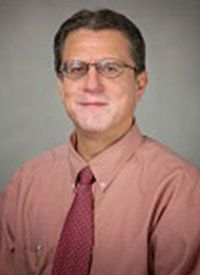Article
Genetic Testing Grows as Critical Component in NSCLC Treatment
Author(s):
Alberto Chiappori, MD, discusses emerging biomarkers in non–small cell lung cancer and the different ways to test for them.
Alberto Chiappori, MD, senior member of oncology and medicine for the Thoracic Oncology Program at Moffitt Cancer Center

Alberto Chiappori, MD
Genetic testing is a critical component in the non—small cell lung cancer (NSCLC) treatment paradigm, said Alberto Chiappori, MD, as the detection of molecular abnormalities can be used to inform treatment decisions and improve patient outcomes.
"We are discovering many of these relatively infrequent, but altogether important, mutations for which we have direct applications," said Chiappori. "As such, testing is the center of the paradigm. You test [for these mutations], you find them, you treat the patient, and you improve outcomes."
In an interview during the 2019 OncLive® State of the Science Summit™ on Non—Small Cell Lung Cancer, Chiappori, senior member of oncology and medicine for the Thoracic Oncology Program at Moffitt Cancer Center, discussed emerging biomarkers in NSCLC and the different ways to test for them.
OncLive: What are some of the emerging biomarkers in NSCLC? What is the importance of testing for these genetic alterations?
Chiappori: [In my presentation], I shared information on emerging biomarkers, or more specifically, some of the less frequent and less common, but emerging mutations or genetic alterations that can present in tumors—not only lung cancer, but in solid tumors in general. I also discussed new medications for genetic alterations like NTRK fusions, RET rearrangements, KRAS, BRAF, and HER2 mutations.
We now have approved medications for genetic alterations that presumably are rare in lung cancer. However, [these mutations also present] in many other tumors, so we shouldn't see the application of this the testing [to just] a fraction of the patients. We should view this more as an absolute number of patients who benefit from the treatment. It may sound like the percentage is small—although it is not small in some diseases—the sheer number of patients who actually benefit [from testing] and the significance of that benefit make testing a major component in the paradigm.
Does it matter whether you use a liquid biopsy versus a tissue biopsy to screen for these fusions and alterations?
That's a good question. Thus far, to the extent of my understanding, it doesn't necessarily matter. From the technology point of view, [the benefit of the approaches appears] to be very similar if not the same. The issue has to do more with accessibility, the amount of DNA that you can extract, and other logistical scenarios.
For a clinician like me, I see [both approaches as] complementary. There are some scenarios where you may find something in the circulating tumor DNA (ctDNA) that you might have missed with the tumor DNA and vice versa.
What are the chances of identifying multiple driver mutations in an individual tumor?
For a clinician like me, the simple answer to that is "Yes." However, [that’s] not exactly [true], because we have seen cases where alterations that we assumed were non-overlapping or non-coexistent have co-existed either as an initial detection or sometimes as mechanisms of resistance on a particular tumor. The other thing is that co-existence, to some degree, depends on how deep you look, how sophisticated and how profound the technology is that you use to look for alterations, and how wide your spectrum of alterations is. There are some [mutations] that are typically recognized as non-overlapping—such as KRAS with EGFR—but as I said, for a clinician like me, the simple, straight-forward answer is, “Yes.” However, there are some caveats to that answer.
Is there one next-generation sequencing panel that you recommend that encapsulates all of these abnormalities?
No, not really. At Moffitt Cancer Center, we have our internal panel that we call Moffitt STAR*. [The assay] includes 170 different genes, but that's for tissue DNA. For ctDNA, I personally have used the Guardant360 [liquid biopsy assay] more often. However, it's not the only one that I have used. It’s convenient; I order this test, my nurse knows already how to order it, and we know where to get the results. From a practical point of view, that's the [assay] that I order the most, but that’s not to say that others are not just as good or as useful.
We saw some exciting data for patients with KRAS mutations. Did you want to speak to any agents in particular?
In my presentation, I included some of the preliminary data with AMG 510, so yes, I believe that KRAS has been an achievable threshold and a surmountable obstacle for lung cancer physicians. Suddenly, if not for all types of KRAS mutations, for a significant proportion of those patients, we seem to have a small molecule that we can finally use. It's probably preliminary in terms of what we know so far, but there are some other agents that are being investigated as well. Therefore, it looks like we may be on the right track to finally breaking that code, just like we have broken some others.
What is your take-home message regarding emerging biomarkers in NSCLC?
We need to understand the general type of somatic alterations that malignancies can contain, recognize that these alterations are widely present in many solid tumors or hematologic malignancies in different proportions, and realize that we need to test patients in order to identify them. Because, as we outlined in my presentation, there are many effective treatments for those specific patients that altogether can change the outcome of the disease in a significant way.








